Ice is essential in the food and beverage industry and manufacturing. The applications range from preserving perishable goods to cooling down components. But not all ice is the same or equal. Nugget and flake ice are two popular types of ice used in commercial settings.
While both are soft, chewable, and have unique features, they are not interchangeable. Understanding the difference between the two helps determine which one suits you. So, what is the difference between nugget and flake ice?
This article will explore the characteristics of the nugget and flake ice. And their respective advantages and disadvantages. We will also compare the physical and textural differences between the two types of ice. As well as their uses and maintenance requirements. So, let’s dive in and learn more about the fascinating world of ice!
What Is the Difference Between Nugget and Flake Ice?
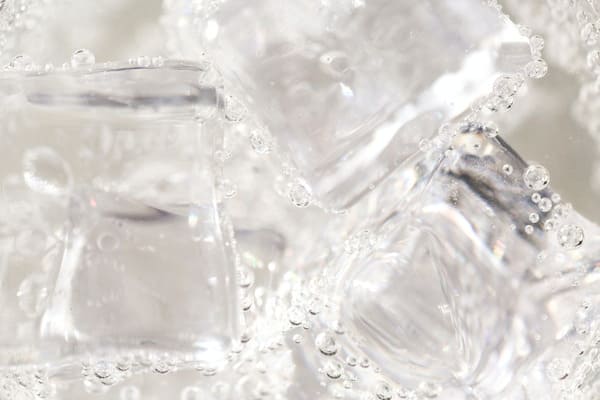
The difference between nugget and flake ice is their physical characteristics and use. Nugget ice is a compressed and chewable type used in food service applications. These include soft drinks, blended beverages, and ice dispensers.
But flake ice is a softer and more flexible type of ice that molds to the shape of the container. It is often used in seafood displays, medical applications, and food transportation. Additionally, flake ice is more perishable than nugget ice. It requires frequent maintenance and cleaning due to its tendency to clump together.
Let’s dive into the next sections to learn about the specifics of a nugget and flake ice. Also, the comparison between the two.
The first section will discuss nugget ice, its characteristics, production process, and applications. The second section will focus on flake ice, its properties, production, and uses. And on the last section, we will compare a nugget and flake ice, highlighting the key features.
1. Nugget Ice

Nugget ice, also known as chewable ice, is a type of ice made by compressing small flakes of ice. The result is usually small, cylindrical nuggets. It is often used in commercial settings such as restaurants, bars, and hospitals. But it has become quite popular for home use.
Nugget ice is popular for its unique texture. It is softer and more porous than traditional ice cubes. This texture allows the ice to absorb the flavors of beverages and food. It melts slower than traditional ice, making it ideal for blended drinks or cocktails.
Nugget ice is also used in healthcare for patients with difficulty swallowing. It is also vital in retail settings for display purposes.
Characteristics of Nugget Ice
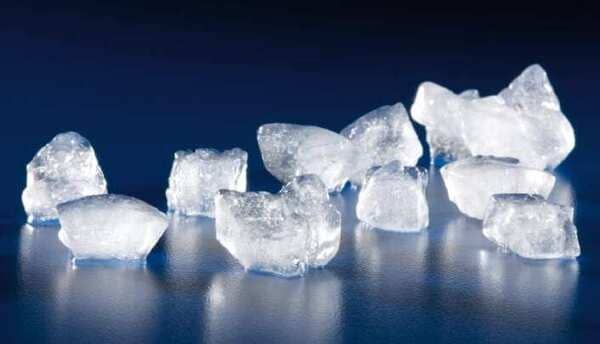
- Shape– Nugget ice is distinguishable from other types of ice. It has a small, cylindrical shape and soft, chewable texture. Some of the best ice machines produce chewable compressed nugget ice.
- Size– It measures between 0.25 and 0.5 inches in diameter. It also has a density of about 70% to 80% of traditional ice cubes.
- Texture– Nugget ice is also notable for its high water content. Like sonic ice, it gives it a slushy consistency when chewed. This texture makes it easier on the teeth and more enjoyable to chew, so it is often called “chewable ice.”
- Cooling– Nugget ice cubes have a lower melting point than traditional cubed ice. This allows them to cool beverages faster without watering them down.
How is Nugget Ice Made
The process involves compressing flakes of ice together to form small nuggets. It also involves freezing water in a controlled environment. Then shaving the ice into small flakes using a special ice machine. These flakes are then compressed under high pressure to form small, irregularly-shaped nuggets.
Advantages of Nugget Ice
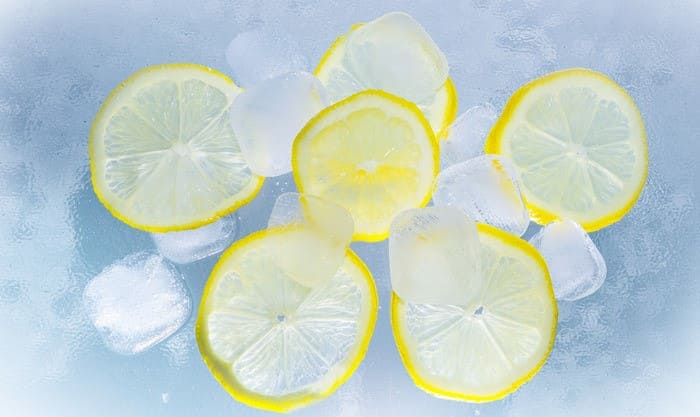
- Absorbs flavors: Nugget ice is porous and absorbent. So it can pick up the flavors of beverages and food. This makes it an excellent choice for use in frozen drinks and cocktails. It is also useful in food service settings, often used to cool and flavor dishes.
- Slower melting: Nugget ice melts slower than traditional ice. As a result, it can keep beverages cooler longer without diluting them. This makes it an ideal choice for use in iced coffee and tea, as well as in cocktails and frozen desserts.
- Soft and chewable: Nugget ice’s soft texture makes it easier on the teeth and more enjoyable to chew. This makes it a popular choice in healthcare settings. It is useful when patients have difficulty chewing or swallowing harder ice cubes.
- Versatile: Nugget ice is vital in various applications, from food service to home use. It is often found in restaurants, bars, and hospitals. But has become popular in home ice makers and refrigerators.
- Aesthetically pleasing: Nugget ice has a unique appearance. It can be appealing in cocktails and other beverages. Its cylindrical shape and porous texture stand out from traditional ice cubes. This means that you can add a touch of sophistication to any drink.
Disadvantages of Nugget Ice
- Cost: Nugget ice machines can be more expensive to buy and maintain than traditional ones. This can make them cost-prohibitive for some businesses or individuals.
- Maintenance: Nugget ice machines need regular cleaning and maintenance. Doing this prevents the growth of bacteria and ensures the quality of the ice. This can be time-consuming and costly for businesses with high ice production needs.
- Noise: Nugget ice machines can be noisy. This can concern businesses or individuals who need quiet environments.
- Limited availability: Nugget ice may not be available in all areas. It makes it difficult to source for those who prefer it over traditional ice cubes.
Applications of Nugget Ice in Various Industries
- Food and Beverage Industry: Nugget ice is crucial in the food and beverage industry. It cools drinks, makes smoothies, and provides a crunchy texture to food items.
- Healthcare Industry: Nugget ice is often used in hospitals and clinics. It provides patients with ice chips to help soothe dry mouth or reduce nausea.
- Retail Industry: Nugget ice is vital in supermarkets and grocery stores. It keeps perishable food items cold, such as seafood and meat.
- Hospitality Industry: Nugget ice is often used in hotels for guest room service. It is also used in bars and restaurants for mixed drinks and cocktails.
2. Flake Ice
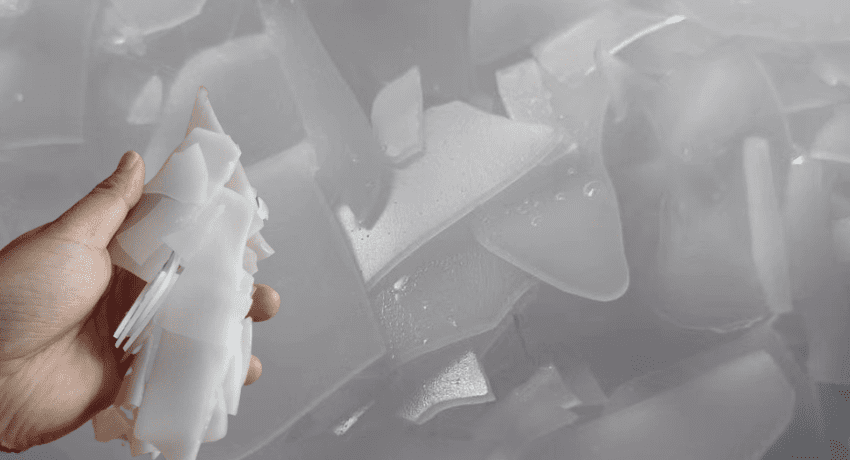
Flake ice is a thin, flat, and irregularly-shaped type of ice. It is often used in the seafood industry to keep fresh and moist. Flake ice is also used in the medical and healthcare industry for cooling equipment. It is also used in the construction industry for concrete cooling.
Flake ice is often made by spraying water onto a refrigerated surface below freezing. The water freezes into thin sheets of ice that are then scraped off the surface by a rotating blade. The resulting ice is light, airy, and unique texture perfect for various applications.
Characteristics of Flaked Ice
- Texture– Flake ice has a unique texture that is soft and pliable. It is perfect for packing around food products. This is because it conforms to their shape, preventing damage during transportation.
- Cooling– Flake ice has a high surface area to volume ratio. As a result, they cool products fast. This is because the ice comes into contact with all sides of the product, maximizing the cooling.
- Melting– The melting of flaked ice melts is slow and even, unlike crushed ice. This is great for applications where a slow and consistent melting rate is vital.
- Size– Flake ice is available in various sizes. Small flakes are ideal for displaying seafood, and larger flakes for industrial uses.
How is Flake Ice Made?
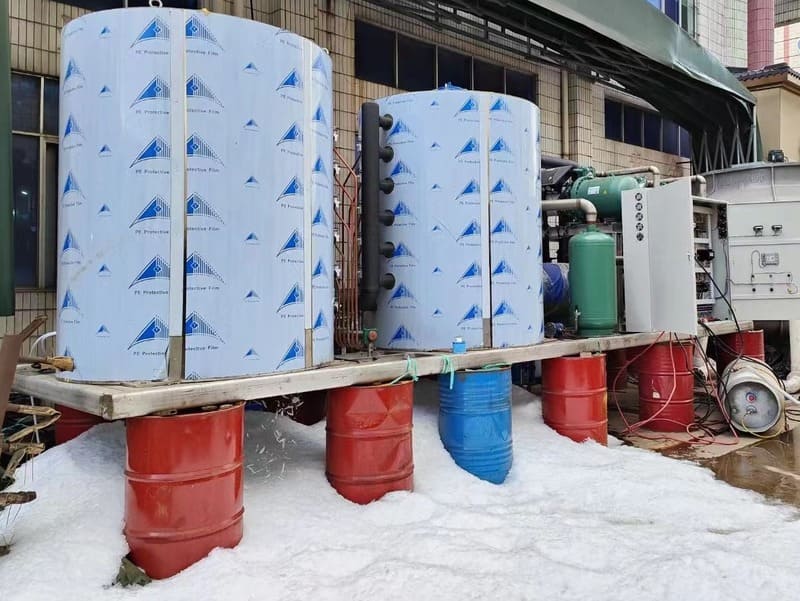
Flake ice is often produced using a specialized machine called a flake ice maker. It involves spraying a film of water onto a cooled drum kept at sub-zero temperatures. The water freezes, forming a thin layer of ice on the drum.
A scraper then removes the ice from the drum in the form of flat, thin flakes. The flakes are then collected and stored in a bin until they are ready for usage.
Advantages of Flake Ice
- Cooling: Flake ice is perfect for applications requiring fast and efficient cooling. It is often used in the seafood industry to keep products fresh. It is also used in the medical industry to preserve organs for transplantation.
- Storage: Flake ice is easy to store and transport because you can pack it around products. This reduces the risk of damage during transportation. It also ensures that products stay fresh longer.
- Aesthetics: Flake ice is vital in displays to create an eye-catching effect. It is often used in seafood displays to create a bed of ice that makes the products look fresh and appealing.
- Malleability: Flake ice is soft and pliable, which makes it easy to pack around products. Unlike the half-dice ice cubes, this is especially important in the food industry. You must transport delicate products like fish and vegetables without damage.
- Versatility: This ice has various applications, from food preservation to medical uses. This makes it a versatile option for businesses that need to keep products cool.
Disadvantages of Flake Ice
- Production: Flake ice requires specialized equipment. It can be expensive to buy and maintain. This can be a significant investment for businesses producing large quantities of ice.
- Storage: Flake ice requires storage space. This can be challenging for businesses with limited space. Ensuring the storage area is well-ventilated is vital to prevent ice from melting.
- Maintenance: Flake ice machines need regular maintenance to operate at peak efficiency. This can be time-consuming and expensive for businesses. Especially those that don’t have the resources to maintain their equipment.
- Environmental Impact: The production of flake ice can have an environmental impact. It requires energy and can contribute to greenhouse gas emissions. This happens if generated from non-renewable sources.
Applications of Flake Ice in Various Industries
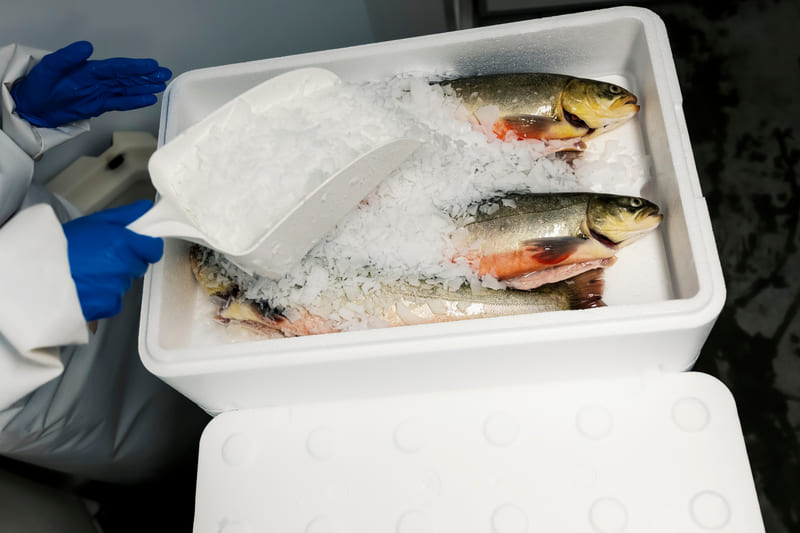
- Food processing: Flake ice is usually loved in the food processing industry. It cools and preserves perishable products such as seafood, meat, and poultry.
- Concrete cooling: It is vital in construction to cool concrete during mixing. This helps to prevent cracking and improves the strength of the finished product.
- Healthcare: Flake ice is crucial in hospitals and other healthcare settings. It cools and preserves medical specimens and provides cooling for medical equipment.
- Fishing and seafood processing: Flake ice is vital in fishing and seafood processing. It keeps products cool and fresh during transport and storage.
- Supermarkets and convenience stores: Flake ice is often used in supermarket stores. It keeps products like packaged seafood, meats, and produce fresh and cool.
Comparison Between Flake Ice and Nugget Ice
A. Physical Differences
Nugget ice is cylindrical and has a softer, chewable texture than other types of ice. It is also sometimes referred to as pellet ice. t is usually about 1/2 to 3/4 inch in diameter and 1/2 to 3/4 inch in length.
But flake ice is thin and flat, with a more delicate structure resembling small chips or flakes. It is often created by shaving thin layers of ice from a larger block. It is then produced in various sizes, from small, fine particles to larger flakes about 1/8 to 1/2 inch thick.
B. Texture Differences
The texture of nugget ice is soft and chewable. It is ideal for use in blended drinks and smoothies and serving in ice dispensers.
Flake ice has a more delicate texture. It allows molding around products that need chilling or kept cool, such as seafood or salad bars.
C. Maintenance and Cleaning
Both types of ice need regular maintenance and cleaning. It ensures they remain sanitary and contamination-free. Nugget ice machines need cleaning with water and vinegar to prevent mineral buildup.
In contrast, flake ice makers need more cleaning due to their delicate structure. This helps prevent bacterial growth. Both types of ice machines also need regular filter changes. The cleaning and filter changes ensure clean, fresh ice production.
D. Production Process
Nugget ice is usually made by compressing ice flakes into small, cylindrical shapes. The ice flakes produced by a flaked ice machine shave thin layers of ice off a rotating drum. These ice flakes are then compressed into cylindrical shapes using a hydraulic press.
In contrast, flake ice production involves spraying water. The water sprays onto the surface of a cooled drum or a stationary evaporator plate. This water then freezes into a thin layer of ice. The ice layer is then scraped off the surface using a blade or auger and broken into small pieces.
E. Ice Melt Rate and Cooling Efficiency
Nugget ice cube has a slow melting rate and provides excellent cooling efficiency. This is due to their high surface area-to-volume ratio. It is also very dry, which makes it ideal for keeping food items cool and fresh without getting them wet.
In contrast, ice flake has a faster melting rate and gives lower cooling efficiency. This is due to their low surface area-to-volume ratio. It is ideal for applications that need rapid cooling, such as in the seafood industry.
F. Applications
Nugget ice is usually used in the food service industry. This includes bars, restaurants, and convenience stores. It is also used for patient care in healthcare facilities, e.g., hospitals and nursing homes.
Flake ice is usually used in the seafood industry. This is because it provides rapid cooling and maintains the freshness of the seafood. It is also used in the medical industry, for example, in medical laboratories and blood banks. It helps keep specimens and samples cool during transportation.
Conclusion
Nugget and flake ice may seem similar at first glance. But they have differences that make them better suited for certain applications. Nugget cube ice is popular for its soft, chewable texture and is perfect for beverages or snacking. At the same time, flake ice is ideal for food preservation and presentation due to its ability to mold to any shape.
Understanding each type’s unique properties and applications helps you choose the right one. So, next time you shop for ice, remember the differences between nugget and flake ice. Always choose the one that best fits your needs.


